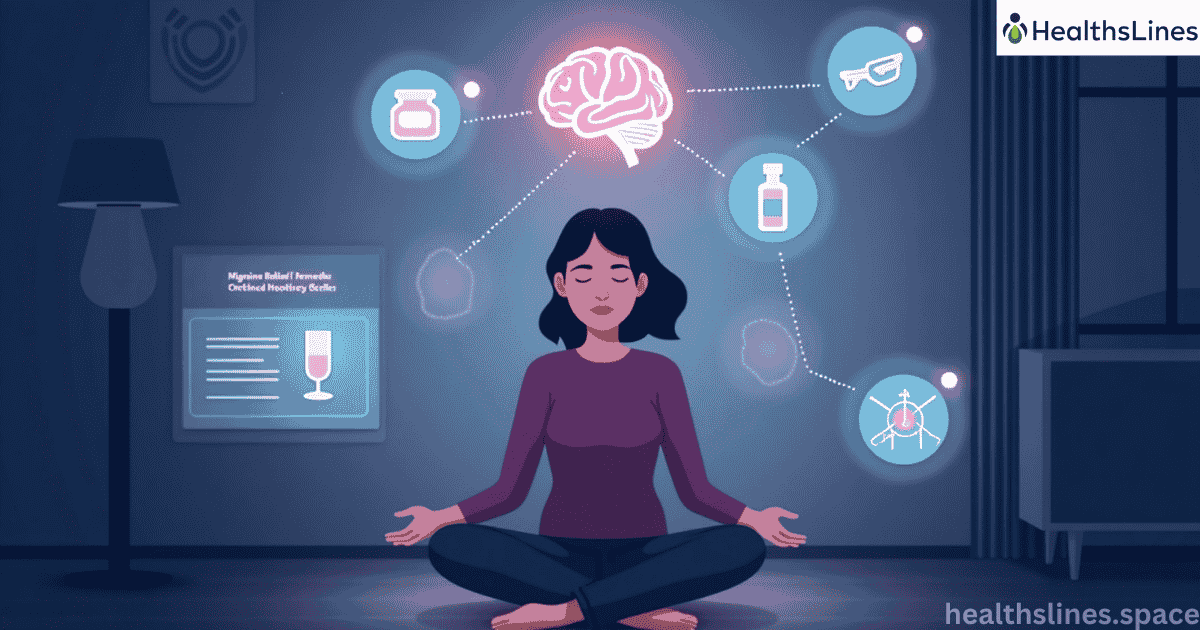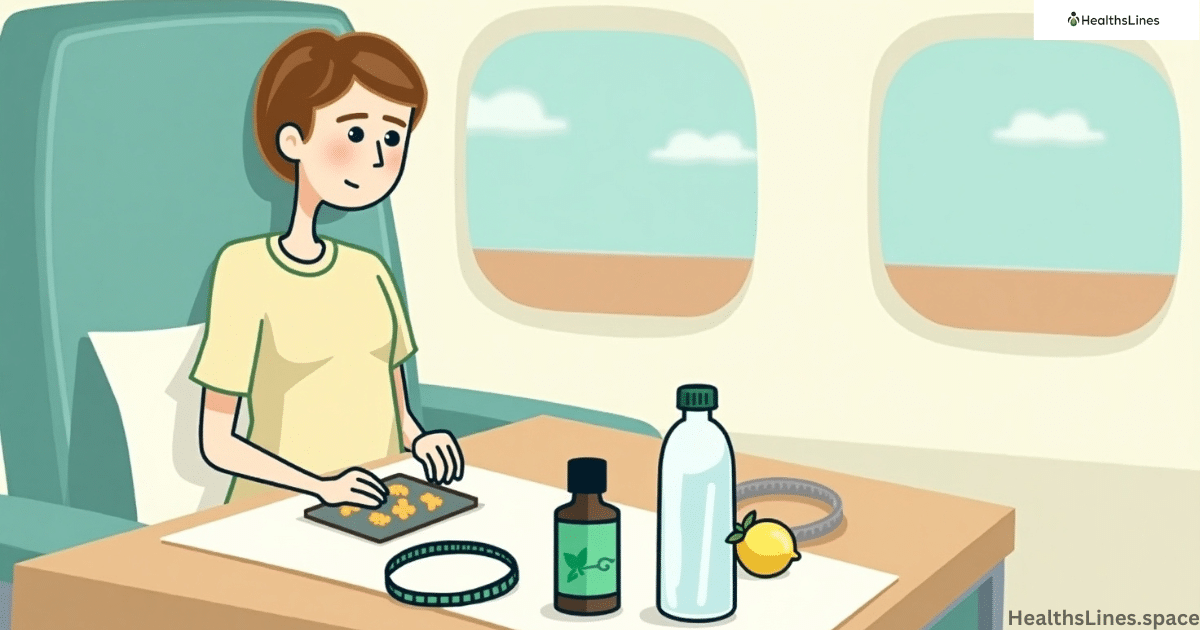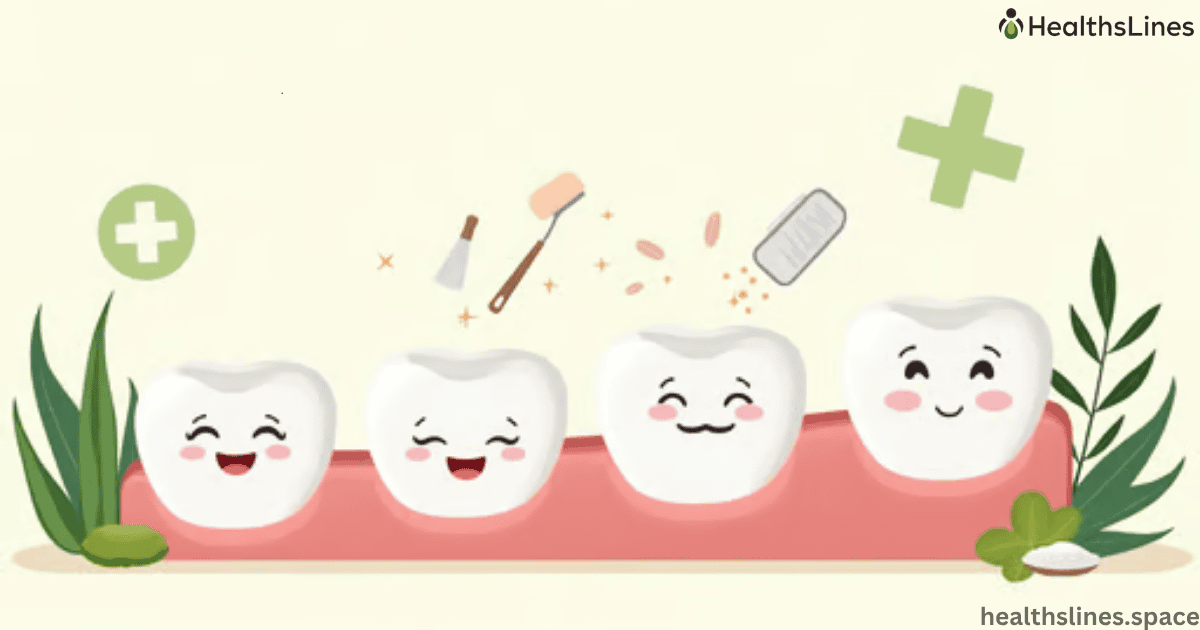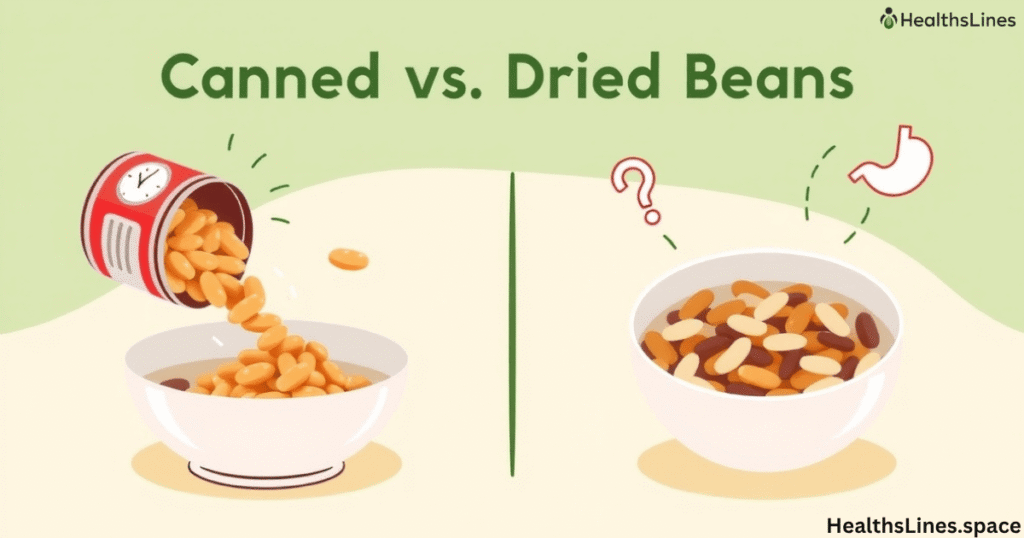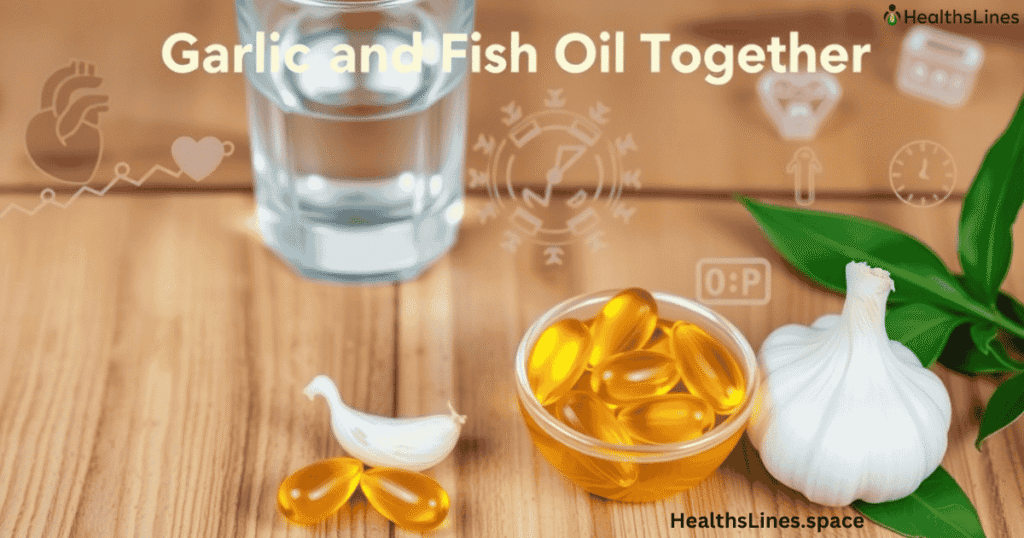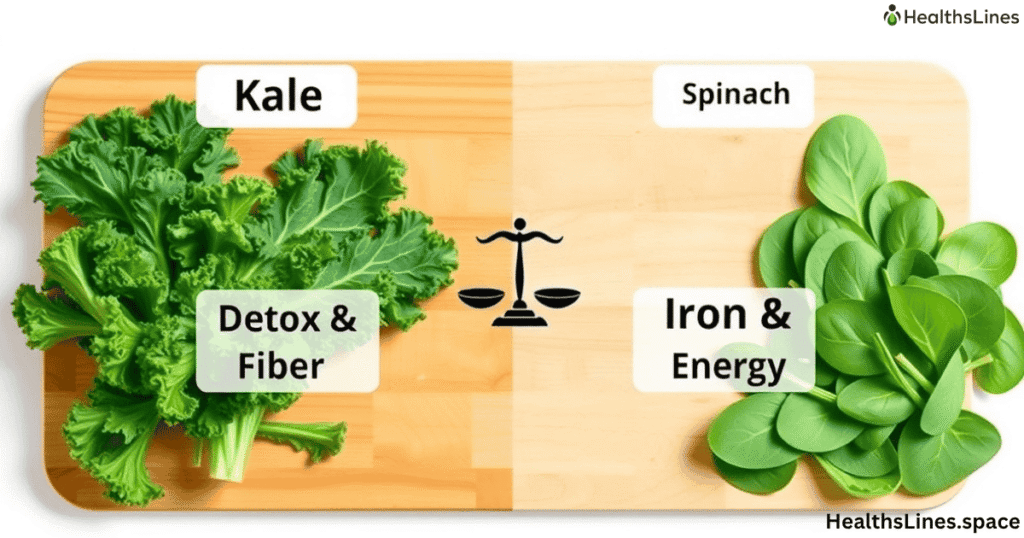Migraines can make your life miserable. The pain, nausea, and sensitivity to light or sound are hard to handle. If you’re tired of pills and want migraine relief without medication, you’re not alone. Many people today are turning to natural remedies for migraine to ease symptoms and prevent attacks Migraine Relieve Remedies.
This guide will walk you through natural migraine treatment at home. It’s packed with science-backed facts, practical tips, and insights into how to relieve migraine naturally. Whether you’re looking for fast migraine relief or ways to stop migraines before they start, you’ll find everything you need right here.
Understand What Triggers a Migraine
Before trying any home remedies for migraines, it helps to understand what causes them. Migraines aren’t just bad headaches. They are neurological and can be triggered by many things like food, stress, hormones, and sleep problems. Some people notice that weather changes or skipping meals can also cause an attack. Others might have trouble with bright lights or loud noise.
To manage migraines, you must find your personal triggers. Keeping a migraine diary helps track patterns. You can note the time, day, food eaten, stress levels, and other details. Over time, this reveals what to avoid. Avoiding triggers is one of the best ways to prevent migraines naturally.
1. Magnesium Can Help Prevent Migraines
Studies show that people with migraines often have low magnesium levels. Magnesium for migraine prevention is one of the most researched natural remedies for migraine. It helps calm overactive nerves in the brain and relaxes muscles. This can stop migraines before they start.
The best forms of magnesium for migraine are magnesium glycinate and magnesium citrate. These are easier on the stomach. You can get it from leafy greens, almonds, and pumpkin seeds. But most people need supplements to get enough. Around 400 mg per day works for most adults. It’s safe but taking too much may cause loose stools.
2. Riboflavin (Vitamin B2) Cuts Down Migraine Attacks
Another powerful option is vitamin B2 riboflavin migraine treatment. Riboflavin helps cells make energy. When the brain doesn’t get enough energy, a migraine may begin. Studies found that taking 400 mg of riboflavin daily can lower how often you get migraines.
This method works well and has almost no side effects. It may take a few weeks to see results. But it’s a good long-term natural migraine relief for teens and adults. You can find riboflavin in dairy, eggs, lean meat, and green veggies.
3. CoQ10 Reduces Migraine Severity
CoQ10 migraine treatment is another science-based option. Coenzyme Q10 is a compound your body makes to help cells produce energy. Taking CoQ10 as a supplement supports brain function and lowers inflammation.
A dose of 100–300 mg per day is effective. It works best when taken consistently. CoQ10 has few side effects and is safe even for kids. Many people see fewer and less intense migraines after regular use.
4. Feverfew – A Traditional Herb for Migraine Relief
Feverfew for headache has been used for centuries. It works by stopping blood vessel widening, which can lead to migraines. Feverfew also lowers inflammation. Most people take it in capsule form.
Some studies show mixed results, but many users report success. It’s best taken daily. Possible side effects include mouth ulcers or an upset stomach. It’s considered one of the safe herbal remedies for migraines when used properly.
5. Butterbur – Effective But Use With Caution
Butterbur is one of the best herbs for migraines and has strong support from research. It helps reduce inflammation and spasms in blood vessels. However, raw butterbur contains harmful chemicals that can damage the liver.
Only use butterbur supplement safety products labeled “PA-free”. These have the toxins removed. A dose of 50–75 mg twice daily can prevent migraines. Always talk to a doctor before starting butterbur.
6. Peppermint Oil Works on Tension and Migraine Pain
Peppermint oil headache relief is fast and effective. The menthol in peppermint cools the skin and relaxes muscles. Applying it to the temples and forehead can reduce pain within 30 minutes.
It’s easy to use. Just mix a few drops with a carrier oil like coconut oil and rub it in. Peppermint oil is safe for teens and older children. It’s one of the top natural ways to treat migraines without pills.
7. Lavender Oil Calms the Nervous System
Lavender essential oil for migraines helps reduce both pain and stress. When inhaled or used in a diffuser, it can shorten the length of migraine attacks. Some people use it with peppermint oil for better results.
One study found that inhaling lavender for 15 minutes helped more than half of participants feel better. Lavender oil also supports better sleep, which prevents future migraines.
8. Ginger Works Like Some Prescription Drugs
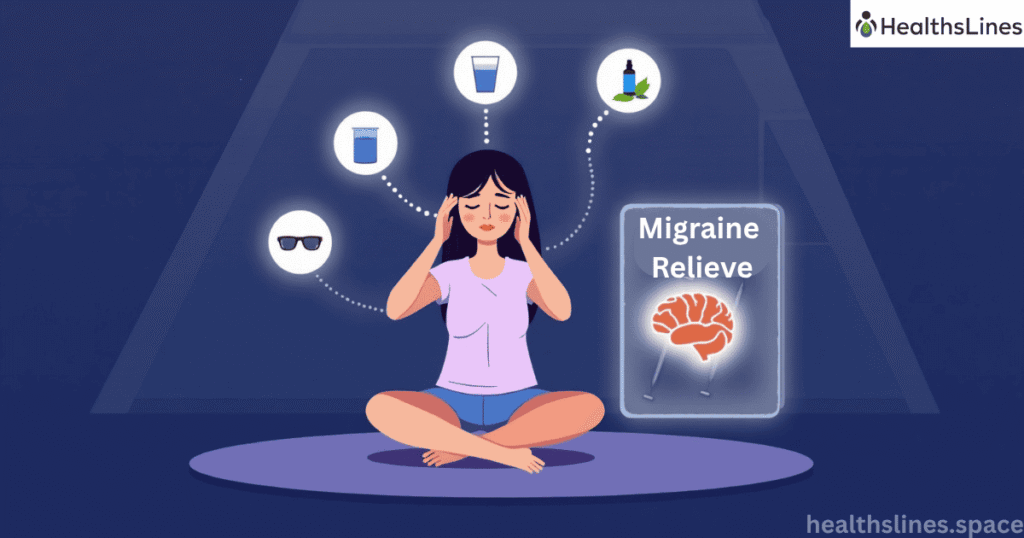
Ginger root for nausea and headaches is one of the oldest known remedies. It has anti-inflammatory and anti-nausea effects. In one study, ginger worked as well as sumatriptan, a common migraine drug.
You can take ginger as tea, capsules, or chew raw pieces. A dose of 500 mg is common. It’s safe and easy to add to your daily routine. Ginger helps stop migraines early and soothes stomach upset.
9. Acupuncture Reduces Frequency and Intensity
Acupuncture for chronic headaches is a trusted alternative therapy for migraines. Tiny needles placed in specific points help restore balance and improve energy flow in the body.
Research shows acupuncture lowers migraine frequency and duration. It also boosts serotonin, the brain’s feel-good chemical. Regular sessions with a trained acupuncturist offer strong results without side effects.
10. Try Acupressure at Home
Unlike acupuncture, acupressure points for migraine can be used at home. Pressing on certain spots like LI4 (between thumb and index finger) or PC6 (on the wrist) can ease nausea and tension.
This method is safe for all ages. Apply pressure gently for 1–2 minutes. It’s a fast, non-drug option for migraine and works well during early symptoms.
11. Biofeedback Therapy Trains Your Brain
Biofeedback uses sensors to monitor body signals like muscle tension, heart rate, or skin temperature. With training, you can learn to control these signs of stress. This helps prevent or shorten migraines.
It’s one of the best complementary migraine therapies and works well when combined with lifestyle changes. Biofeedback has long-term benefits and fewer side effects than drugs.
12. Yoga Improves Blood Flow and Calms the Mind
Yoga for migraine sufferers offers both physical and mental relief. Simple yoga poses improve blood circulation and release tight muscles. Deep breathing also lowers stress hormones like cortisol.
Studies show people who do yoga regularly have fewer migraines. Start with gentle moves like child’s pose, cat-cow, and seated forward fold. Even 15 minutes daily can help your brain and body recover.
13. Massage Therapy Releases Tension and Pain
Massage therapy for headache is more than relaxing. It targets tight muscles in the neck, shoulders, and scalp that trigger migraines. It improves blood flow and reduces cortisol levels.
Try professional therapy or self-massage. Focus on the back of the neck and temples. Regular sessions lead to better sleep, reduced stress, and fewer headaches.
14. Food Triggers Can Be Hidden Enemies
Some foods can trigger migraines. This includes aged cheese, processed meats, chocolate, alcohol, and foods with MSG or nitrates. Caffeine can help or hurt depending on how much you drink.
To discover your food sensitivity and migraines, start an elimination diet. Cut out common triggers and slowly reintroduce them. Keeping a food and migraine journal helps you find patterns.
15. Stay Hydrated Throughout the Day
A common migraine trigger is dehydration. Even mild dehydration affects brain function and blood vessels. The best dehydration headache cure is to drink enough water daily.
Aim for 8–10 cups of water. Add electrolytes if you sweat a lot or exercise. Herbal teas and water-rich fruits like watermelon and cucumber can also help keep you hydrated.
16. Use Hot or Cold Compresses
Cold compress migraine remedy works best for intense pain. It numbs the area and slows blood flow. A warm compress for tension headaches helps muscles relax.
Use a cold gel pack or ice wrapped in cloth for 15 minutes. For warmth, try a heating pad on the neck or shoulders. Use what feels better for your type of pain.
17. Improve Sleep Quality to Prevent Attacks
Poor sleep is one of the top migraine triggers to avoid. The sleep and migraine connection is strong. Going to bed and waking up at the same time daily helps stabilize brain chemicals.
Avoid screens before bedtime. Create a cool, dark room. Use calming habits like reading or deep breathing. A best sleep routine to avoid migraines includes consistency, comfort, and quiet.
Table: Best Natural Remedies for Migraine Relief
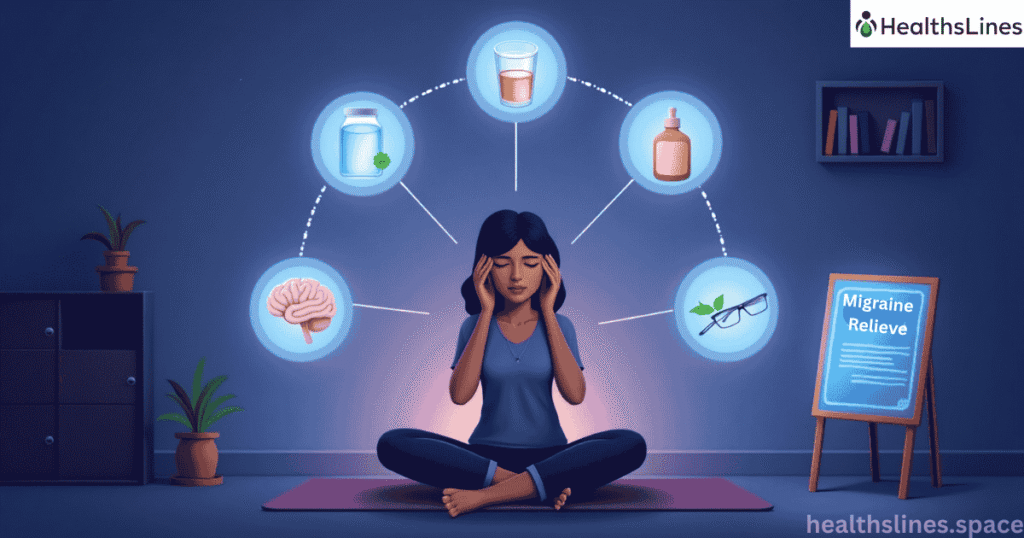
| Remedy | What It Helps With | Evidence Level | Safe For Kids? |
| Magnesium | Prevention | Strong | Yes |
| Riboflavin (B2) | Prevention | Strong | Yes |
| CoQ10 | Prevention, energy boost | Moderate | Yes |
| Ginger | Nausea, pain | Strong | Yes |
| Peppermint Oil | Pain relief | Moderate | Yes (diluted) |
| Lavender Oil | Relaxation, sleep | Moderate | Yes |
| Feverfew | Pain prevention | Moderate | Not recommended |
| Butterbur (PA-free) | Prevention | Strong | With caution |
| Yoga | Stress, blood flow | Strong | Yes |
| Acupressure | Nausea, early relief | Moderate | Yes |
When to See a Doctor
Natural migraine relief for children and adults works well for many. But there are times when medical care is needed. Seek help if migraines become more frequent, last longer than usual, or bring new symptoms like vision loss, confusion, or difficulty speaking. Also, if you’re pregnant, always check with a doctor before trying any natural remedies for migraine.
Final Thoughts
Now you know how to get rid of a migraine naturally and fast. These 17 natural remedies for migraine offer safer, effective choices. Whether you choose supplements for migraine relief, herbs, lifestyle changes, or alternative therapies for migraines, remember that consistency is key. Start small, track your progress, and always listen to your body.
Try one or two remedies at a time. Keep a journal. Adjust your habits. The journey to migraine relief without medication is possible, and it starts with understanding your body and choosing natural solutions that work for you.
